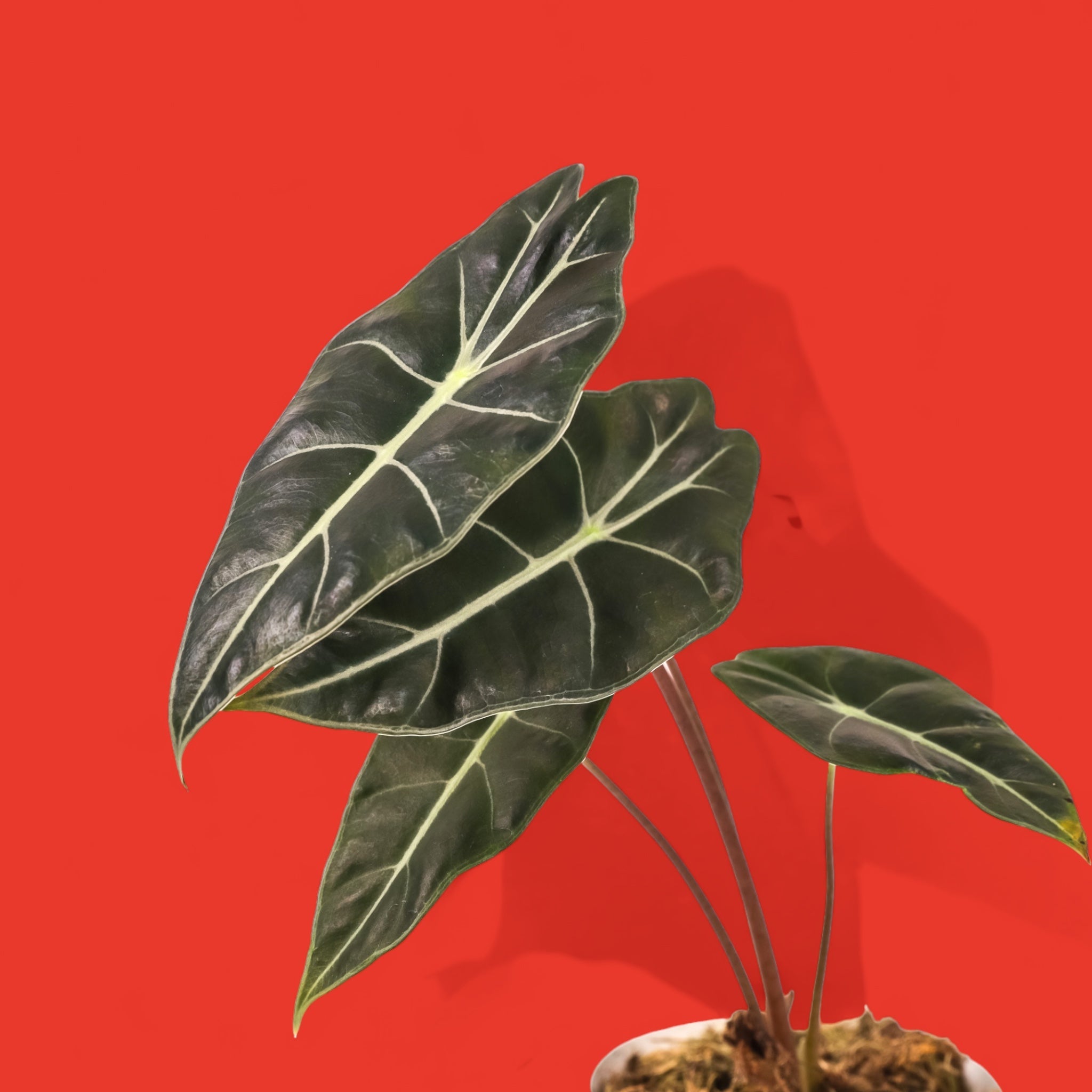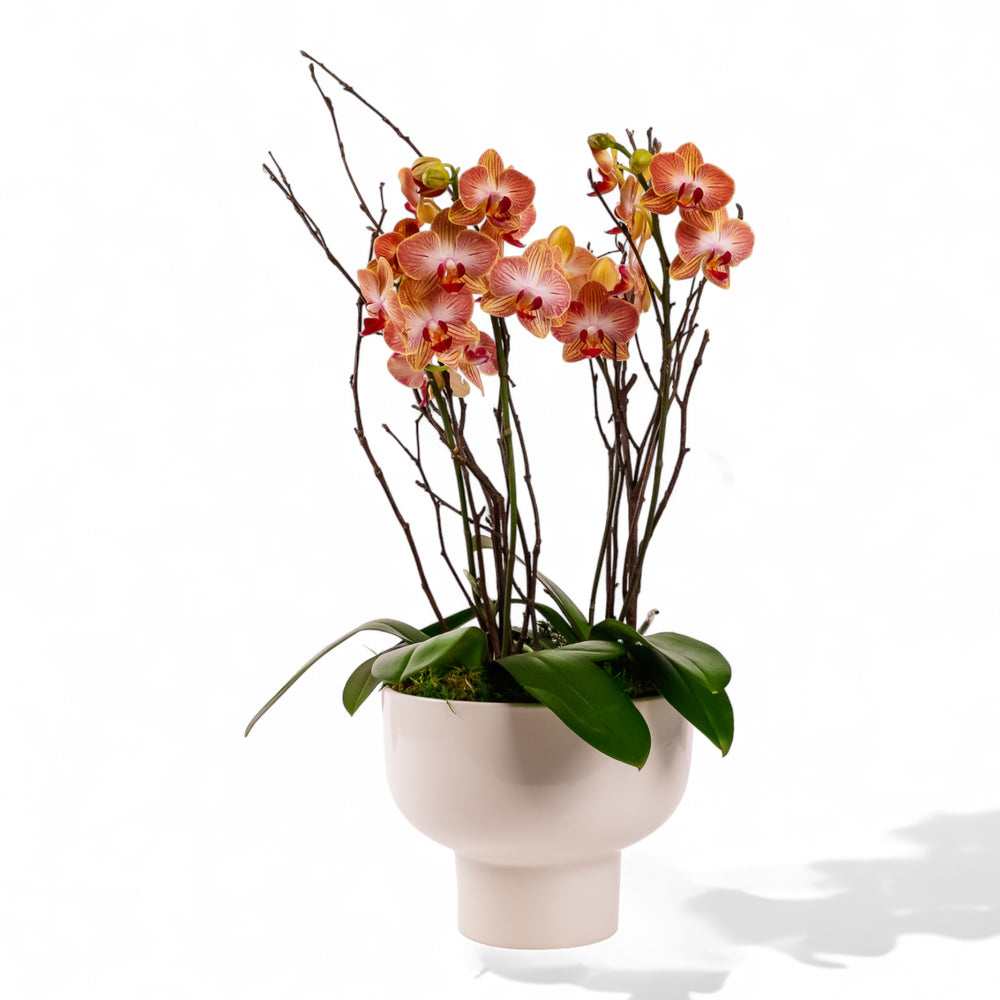You May Like...
Our Guarantee
Receive a refund or replacement product if your not completely satisfied.

Exploring the Gorgeous Alocasia
Alocasias, often referred to as Elephant Ears, are a gorgeous genus of tropical plants known for their large, decorative leaves. Native to the rainforests of Southeast Asia and the tropical regions of the South Pacific, these plants thrive in humid, shaded environments. One interesting fact about Alocasias is their historical significance; in some cultures, they were used as food staples, although proper preparation is crucial due to their natural toxins. With over 70 species, Alocasias have become a popular choice for indoor plant enthusiasts due to their dramatic foliage and diverse varieties.

Popular Alocasia Varieties
There are dozens of different Alocasia types that have unique and distinct features from their color to the texture and shape of the leaves. Depending on the season, we carry a large selection of Alocasia varieties in our Hillcrest flower and plant shop. A curated selection is available to order online. And when you pick a pot or planter for your new Alocasia, our plant staff will gladly pot it up for you.
1. Alocasia Polly (Amazonica)
- Known for its dark green, arrowhead-shaped leaves with striking white veins. This variety is perfect for adding a bold statement to any room.
2. Alocasia Zebrina
- Features zebra-like striped stems and glossy green leaves. The unique pattern on the stems makes it a conversation starter and a favorite among plant collectors.
3. Alocasia Frydek
- Recognized for its velvety, dark green leaves with contrasting white veins. This plant's luxurious texture adds an elegant touch to any indoor space.
4. Alocasia Black Velvet
- Distinctive for its almost black, velvety leaves with white veins. This variety's dramatic appearance is ideal for creating a focal point in your plant collection.

5. Alocasia Silver Dragon
- Showcases silvery-green leaves with prominent dark green veins, resembling dragon scales. Its unique appearance is sure to stand out in any setting.
6. Alocasia Regal Shield
- Offers large, dark green leaves with a hint of burgundy on the underside. This variety is known for its impressive size and striking coloration.
How to Care for Your Alocasia
Light Preferences:
Alocasias thrive in bright, indirect light. Direct sunlight can scorch their leaves, while too little light can slow their growth. East or west-facing windows are ideal, providing ample light without the risk of sunburn. If natural light is insufficient, consider using grow lights to supplement their light needs.
Watering:
Keep the soil consistently moist but not waterlogged. Water when the top inch of soil feels dry. Ensure proper drainage to prevent root rot by using a well-draining potting mix and a pot with drainage holes. During the winter months, reduce watering frequency as the plant’s growth slows down.

Humidity:
Alocasias love high humidity. A humidifier or a pebble tray filled with water can help maintain the necessary moisture levels. Regular misting can also benefit these plants, especially in dry indoor environments. If you notice browning leaf edges, it may be a sign that the air is too dry.
Temperature:
These tropical plants prefer temperatures between 60-80°F (15-27°C). Avoid placing them near drafts, heating vents, or air conditioners, as sudden temperature changes can stress the plant. Consistency in temperature is key to keeping your Alocasia healthy.
Feeding:
Feed your Alocasia with a balanced, water-soluble fertilizer every 2-4 weeks during the growing season (spring and summer). Reduce feeding during the dormant period (fall and winter) to avoid over-fertilizing, which can lead to root burn and other issues. We offer several options on our website.
Potting and Repotting:
Use a well-draining potting mix, such as a blend of potting soil, peat, and perlite. Repot your Alocasia every 1-2 years, or when it becomes root-bound, to provide fresh soil and more space for growth. When repotting, handle the roots carefully to avoid damage. If you prefer, bring in your Alocasia and have our plant professionals repot it for you. You can also check out our newest pots and planters.
Pest Control:
Common pests include spider mites, aphids, and mealybugs. Regularly inspect your plant and treat any infestations with insecticidal soap or neem oil. Maintaining proper humidity and air circulation can help prevent pest problems. Talk to one of our plant professionals and we can assist you in finding the right approach or insecticide to rescue your Alocasia.

Tips on Where to Place Your Alocasia in Your Home or Office
Living Room:
Place your Alocasia near an east or west-facing window where it can receive bright, indirect light. Avoid placing it in direct sunlight or drafty areas. The living room is a great space for larger varieties like Alocasia Regal Shield, which can serve as a stunning focal point.
Bathroom:
Bathrooms with good natural light are ideal due to their naturally higher humidity levels. Ensure the plant receives adequate light to thrive. Smaller varieties like Alocasia Polly can add a touch of greenery and elegance to your bathroom decor.
Office:
An Alocasia can add a touch of nature to your workspace. Place it near a bright window and maintain humidity levels with regular misting or a small humidifier. The unique foliage of varieties like Alocasia Zebrina can provide a refreshing visual break from screens and paperwork.
Pet Safety
Alocasias are toxic to pets if ingested. They contain calcium oxalate crystals that can cause irritation and swelling in the mouth and throat. Symptoms in pets include drooling, vomiting, and difficulty swallowing. If you have curious pets, consider placing your Alocasia out of their reach or opting for pet-safe plants instead. Always consult with a veterinarian if you suspect your pet has ingested any part of an Alocasia.
With the right care, Alocasias can be a stunning addition to your indoor plant collection, bringing a touch of the tropics to your home or office. Their unique and dramatic foliage can enhance any interior space, making them a favorite among plant enthusiasts. Happy planting!




